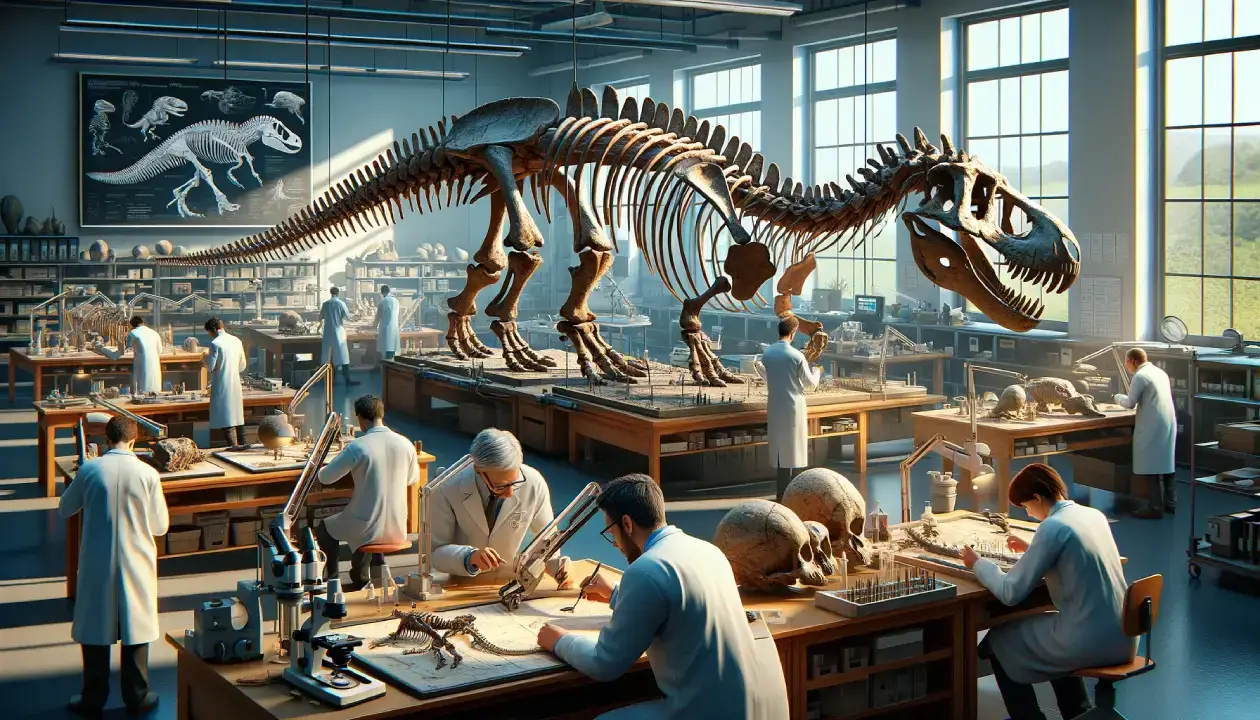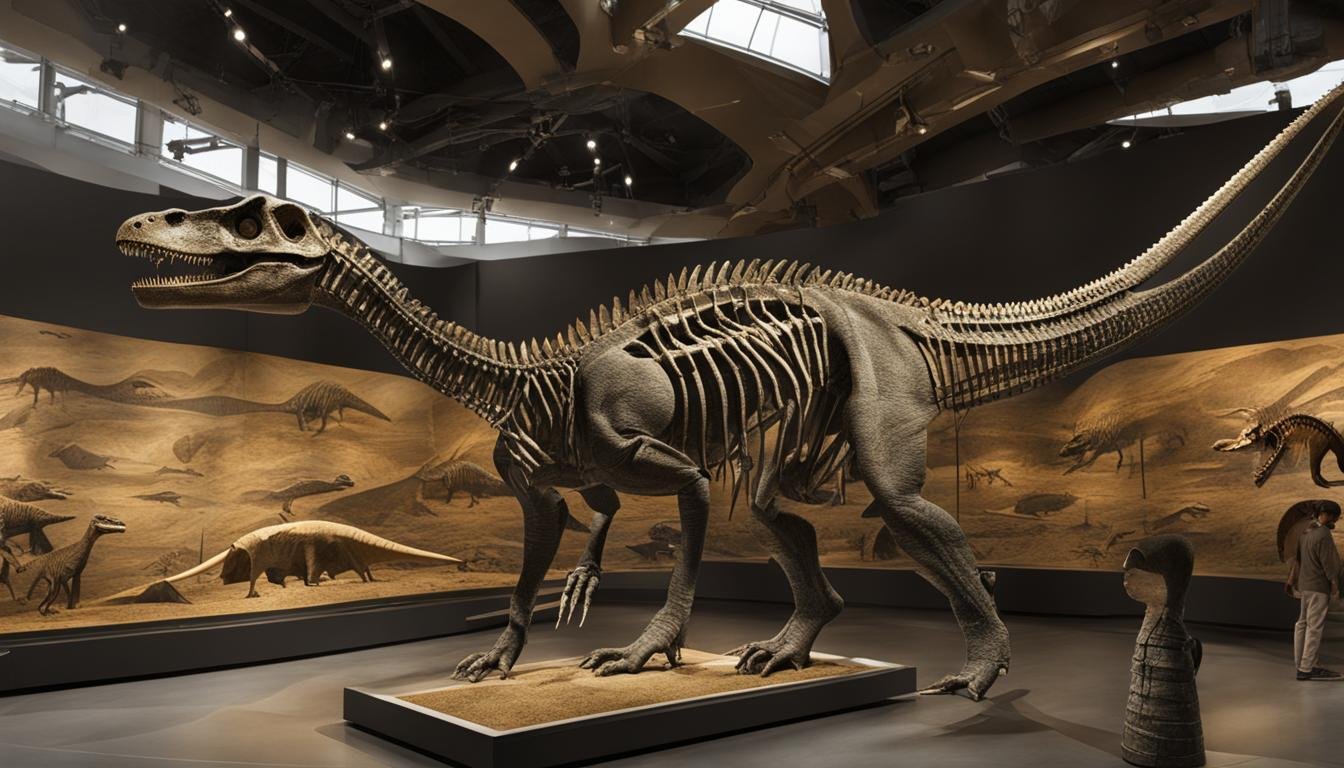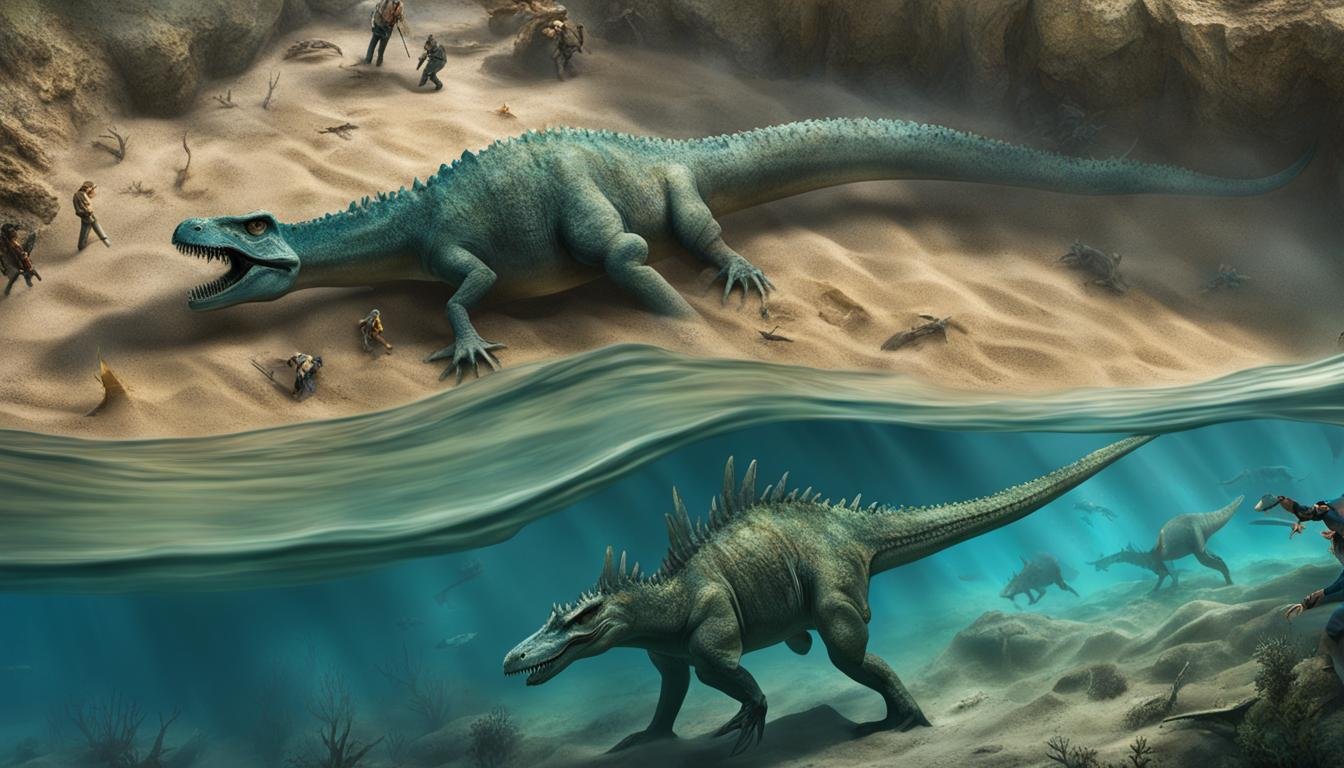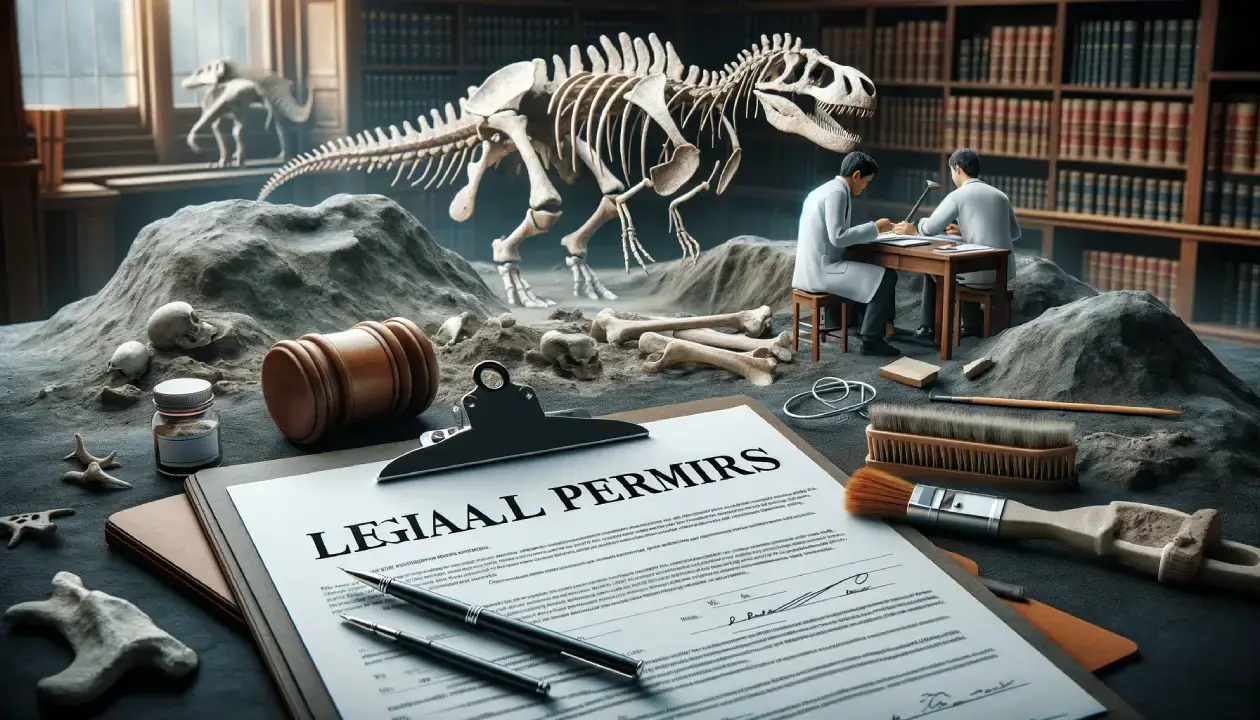Ever wondered how scientists pin an exact age on the majestic dinosaurs that roamed Earth millions of years ago? If you’re a dinosaur enthusiast, a student of paleontology, or simply curious about prehistoric times, this article is a goldmine for you! Here, we’ll dive into the intricate process of dating dinosaur fossils. We’ll unravel the methods used to determine the age of these ancient creatures and explore how these techniques shape our understanding of Earth’s prehistoric past. Why should you care? Because understanding the age of dinosaurs is key to unlocking secrets of our planet’s evolutionary history and the magnificent creatures that once inhabited it. Let’s embark on this time-traveling journey through the lens of science!
| Key Points | Details |
|---|---|
| Understanding Fossil Dating | Learn about relative and absolute dating methods. |
| Techniques Used | Discover radiometric dating, including Carbon-14 and Potassium-Argon methods. |
| Additional Methods | Explore magnetostratigraphy, biostratigraphy, and luminescence dating. |
| Dating Applications | Understand how dating helps in mapping evolutionary relationships, reconstructing paleoenvironments, and tracking dinosaur migrations. |
| Challenges and Future Directions | Learn about the incompleteness of the fossil record, refining dating techniques, and integrating multiple approaches. |
| Why Fossil Dating Matters | Grasp the importance of fossil dating in understanding dinosaurs’ evolutionary history and Earth’s ecosystems. |
The Dating Dilemma: Relative vs. Absolute Dating
When it comes to determining the age of dinosaur fossils, scientists have two main tools at their disposal: relative dating and absolute dating. These methods provide the framework for understanding the ancient history of our planet.
Relative Dating: Unearthing the Past in Layers
Relative dating doesn’t tell us the exact age in years; instead, it places fossils in a sequence of events without assigning a specific numerical age. Here’s how it works:
- Stratigraphy: This is the cornerstone of relative dating. Fossils are found within rock layers (strata), and by examining the sequence of these layers, scientists can determine which fossils are older or younger. It’s like reading a story, where each layer represents a chapter in Earth’s history.
- Index Fossils: These are fossils known to have lived during a specific time period. By finding these index fossils in various rock layers, scientists can estimate the age of the surrounding fossils. It’s a bit like using landmarks to figure out where you are on a journey.
Absolute Dating: The Precision of Numbers
Absolute dating takes the guesswork out of dating and provides a more precise number. This is where radiometric dating techniques come into play.
- Radiometric Dating: This method measures the decay of radioactive isotopes within the fossils or the rocks surrounding them. By understanding how these isotopes decay over time—a process known as half-life—scientists can calculate a fossil’s age in years.
- Carbon-14 Dating: Carbon-14 (C-14) is a radioactive isotope that decays at a known rate. By measuring the ratio of C-14 to Carbon-12 (C-12) in organic remains, scientists can estimate their age, typically effective for fossils up to about 50,000 years old.
- Potassium-Argon Dating: For older fossils, especially those millions of years old, Potassium-Argon dating is a go-to method. This involves measuring the decay of Potassium-40 into Argon-39. It’s particularly useful for dating igneous rocks associated with fossil finds.
By combining these two approaches, paleontologists can construct a more complete picture of the age of dinosaur fossils, piecing together the puzzle of our planet’s prehistoric past.
To explore more about how these techniques are applied in the field, check out our article on paleontological dig sites.
| Dating Method | Description | Key Techniques | Usage |
|---|---|---|---|
| Relative Dating | Establishes the sequence of events in Earth’s history without providing specific numerical ages. | Stratigraphy, Index Fossils | Used to determine whether a fossil is older or younger than other fossils. |
| Stratigraphy | Involves analyzing the sequence of rock strata to understand the relative ages of fossils. | Observation of rock layers, Comparative analysis | Essential in constructing a chronological order of events in Earth’s history. |
| Index Fossils | Utilizes fossils of known ages to determine the relative age of surrounding fossils. | Identification of specific, well-documented fossils | Helps in estimating the age of fossils in the same strata. |
| Absolute Dating | Assigns precise numerical ages to fossils using radiometric techniques. | Radiometric Dating (Carbon-14, Potassium-Argon) | Ideal for determining the actual age of a fossil in years. |
| Radiometric Dating | Measures the decay of radioactive isotopes in fossils or surrounding rocks. | Carbon-14, Potassium-Argon Dating | Used for fossils ranging from thousands to millions of years old. |
| Carbon-14 Dating | Estimates the age of organic remains by measuring the ratio of Carbon-14 to Carbon-12. | Measuring isotope ratios | Effective for fossils up to 50,000 years old. |
| Potassium-Argon Dating | Analyzes the decay of Potassium-40 to Argon-39 to date igneous rocks and fossils. | Analysis of decay rates | Suitable for dating fossils millions of years old, especially igneous rock-associated fossils. |
<image> An illustrated comparison of relative and absolute dating: on one side, layers of sedimentary rock with various fossils embedded, and on the other, a lab setup showing instruments used for radiometric dating, including a geiger counter, test tubes containing rock samples, and a graph displaying radioactive decay. </image>
Refining the Dating Process: Additional Techniques
Beyond the realms of relative and absolute dating, scientists have developed other ingenious techniques to date dinosaur fossils more accurately. These methods not only enhance the precision of dating but also open new windows into understanding Earth’s history.
Magnetostratigraphy: Earth’s Magnetic Imprint
Magnetostratigraphy relies on the Earth’s magnetic field reversals. Our planet’s magnetic field has flipped many times over millions of years. These flips are recorded in sedimentary rock layers.
- Process: As sediments settle and harden into rock, magnetic minerals within align with Earth’s magnetic field. By studying these patterns in different rock layers, scientists can match them to known magnetic reversal timelines.
- Application: This technique is particularly useful in dating sedimentary rocks which are difficult to date using traditional radiometric methods. It’s like a magnetic time capsule, revealing the age of the rocks and the fossils within.
Biostratigraphy: Fossil Assemblages as Time Markers
Biostratigraphy involves correlating fossil assemblages in different geographic locations to known time periods.
- Technique: By identifying and comparing fossil assemblages (groups of different species found together) in various rock layers, scientists can estimate the age of the rocks.
- Significance: This method is especially valuable in areas where radiometric dating isn’t feasible. It links distant fossil sites, offering a broader view of the prehistoric world.
Luminescence Dating: The Glow of Time
Luminescence dating measures the accumulated electrons in certain minerals, usually quartz and feldspar, within sediments.
- How it Works: Over time, these minerals accumulate electrons from natural radiation in their surroundings. When heated or exposed to sunlight, they release this stored energy as light, or luminescence.
- Utility: This method is great for dating sediments that have been buried for thousands to hundreds of thousands of years. It helps date the sediment layers surrounding the fossils, providing a timeframe for when the fossils were buried.
These advanced techniques not only augment the traditional methods of dating but also bring a higher resolution to the fascinating narrative of dinosaur history. By combining multiple dating approaches, paleontologists can create a more comprehensive and accurate timeline of our planet’s prehistoric past.
<image> An illustration showcasing the three additional dating techniques: magnetostratigraphy depicted with layers of rocks aligned with Earth’s magnetic field, biostratigraphy showing different layers of sediment with varied fossil assemblages, and luminescence dating illustrated by a scientist examining glowing minerals under a microscope. </image>
Refining the Dating Process: Additional Techniques
Beyond the realms of relative and absolute dating, scientists have developed other ingenious techniques to date dinosaur fossils more accurately. These methods not only enhance the precision of dating but also open new windows into understanding Earth’s history.
Magnetostratigraphy: Earth’s Magnetic Imprint
Magnetostratigraphy relies on the Earth’s magnetic field reversals. Our planet’s magnetic field has flipped many times over millions of years. These flips are recorded in sedimentary rock layers.
- Process: As sediments settle and harden into rock, magnetic minerals within align with Earth’s magnetic field. By studying these patterns in different rock layers, scientists can match them to known magnetic reversal timelines.
- Application: This technique is particularly useful in dating sedimentary rocks which are difficult to date using traditional radiometric methods. It’s like a magnetic time capsule, revealing the age of the rocks and the fossils within.
Biostratigraphy: Fossil Assemblages as Time Markers
Biostratigraphy involves correlating fossil assemblages in different geographic locations to known time periods.
- Technique: By identifying and comparing fossil assemblages (groups of different species found together) in various rock layers, scientists can estimate the age of the rocks.
- Significance: This method is especially valuable in areas where radiometric dating isn’t feasible. It links distant fossil sites, offering a broader view of the prehistoric world.
Luminescence Dating: The Glow of Time
Luminescence dating measures the accumulated electrons in certain minerals, usually quartz and feldspar, within sediments.
- How it Works: Over time, these minerals accumulate electrons from natural radiation in their surroundings. When heated or exposed to sunlight, they release this stored energy as light, or luminescence.
- Utility: This method is great for dating sediments that have been buried for thousands to hundreds of thousands of years. It helps date the sediment layers surrounding the fossils, providing a timeframe for when the fossils were buried.
These advanced techniques not only augment the traditional methods of dating but also bring a higher resolution to the fascinating narrative of dinosaur history. By combining multiple dating approaches, paleontologists can create a more comprehensive and accurate timeline of our planet’s prehistoric past.
<image> An illustration showcasing the three additional dating techniques: magnetostratigraphy depicted with layers of rocks aligned with Earth’s magnetic field, biostratigraphy showing different layers of sediment with varied fossil assemblages, and luminescence dating illustrated by a scientist examining glowing minerals under a microscope. </image>
Discover more about the intricacies of fossil dating in our in-depth article on dinosaur bone structure analysis.
Applications of Dating Dinosaur Fossils
Dating dinosaur fossils isn’t just about assigning numbers to bones; it’s a key that unlocks the past, revealing the story of these ancient giants. This data helps us in multiple ways:
Understanding Evolutionary Relationships
Accurate dating of fossils is crucial in mapping the evolutionary timeline of dinosaurs. By knowing the ages of various fossils, scientists can:
- Trace Lineage: Understand how different dinosaur species are related.
- Observe Evolution in Action: See how traits evolved over time.
- Fill in Evolutionary Gaps: Identify missing links in the dinosaur family tree.
Paleoenvironmental Reconstruction
Dating fossils provides insights into the environments dinosaurs lived in. It helps in:
- Climate Insights: Understanding the climate conditions of different eras.
- Habitat Analysis: Reconstructing the types of environments dinosaurs inhabited.
- Ecosystem Dynamics: Learning how dinosaurs interacted with their ecosystem.
Biogeography and Migration Patterns
By dating dinosaur fossils, scientists can track how these creatures moved across continents:
- Migration Routes: Understanding how and why dinosaurs moved.
- Geographic Spread: Seeing how dinosaurs adapted to different environments.
- Continental Drift Effects: Studying the impact of Earth’s shifting landmasses on dinosaur distribution.
These applications provide a comprehensive picture of dinosaur life, evolution, and their role in Earth’s history. Dating fossils is more than just a scientific endeavor; it’s a journey into the deep past, unveiling the mysteries of a world long gone.
<image> A digital collage showing three applications of dinosaur fossil dating: a family tree illustrating dinosaur evolution, a lush prehistoric landscape indicating paleoenvironmental reconstruction, and a map highlighting dinosaur migration across ancient continents. </image>
Challenges and Future Directions in Dating Dinosaur Fossils
While dating dinosaur fossils has revolutionized our understanding of the ancient world, this field is not without its challenges. Addressing these issues is crucial for future research and discoveries.
The Incompleteness of the Fossil Record
The fossil record, though rich, is far from complete. This incompleteness poses significant challenges:
- Limited Samples: Not all organisms become fossils; soft-bodied creatures are rarely fossilized.
- Geographic Bias: Most fossils are found in certain locations, leaving gaps in our global understanding.
- Time Gaps: There are periods in Earth’s history from which few fossils have been found.
Refining Dating Techniques
Accuracy in dating is vital. Ongoing efforts to refine these techniques include:
- Improved Technology: Developing more sensitive instruments to measure isotopic decay.
- Cross-Verification: Using multiple methods to date the same fossils for consistency.
- Research and Development: Ongoing scientific research to discover more reliable dating isotopes.
Integrating Multiple Dating Approaches
Combining various dating methods provides a more comprehensive picture:
- Collaborative Research: Scientists from different fields working together to date fossils.
- Multi-Technique Analysis: Using relative and absolute dating in tandem for more accurate results.
- Data Correlation: Comparing results from different dating techniques to build a cohesive timeline.
These challenges and future directions show that the field of dating dinosaur fossils is dynamic and constantly evolving. As scientists continue to refine and develop new methods, our understanding of these magnificent creatures and their time on Earth becomes ever clearer.
<image> A conceptual image showing the challenges in dating dinosaur fossils: a partially incomplete dinosaur skeleton representing the incompleteness of the fossil record, a scientist using advanced dating equipment for refining techniques, and a flowchart integrating multiple dating methods. </image>
Conclusion
The journey of uncovering the age of dinosaur fossils is as fascinating as it is crucial. Each fossil is a piece of the puzzle in our quest to understand the ancient world and its inhabitants.
The Importance of Dating Dinosaur Fossils
Dating dinosaur fossils is more than just a scientific exercise; it’s a window into the past that helps us understand:
- Evolutionary History: Each date helps in piecing together the complex evolutionary journey of dinosaurs.
- Ecosystem Insights: Understanding when dinosaurs lived helps us reconstruct the ecosystems they were part of.
- Global Connections: Dating provides clues about how continents and life on Earth have changed over millions of years.
The Evolving Landscape of Dating Techniques
The field of dating dinosaur fossils is dynamic, marked by continuous advancements:
- Technological Progress: New technologies are constantly developed, offering more precision.
- Collaborative Efforts: Cross-disciplinary collaborations are enhancing our understanding of prehistoric life.
- Future Promise: Ongoing research promises even more accurate and comprehensive dating methods.
The process of dating dinosaur fossils is a testament to human curiosity and ingenuity. It connects us to a world that existed millions of years before us, reminding us of our place in Earth’s grand timeline. As we continue to refine our methods and deepen our understanding, the ancient past becomes ever more vivid and real.
image: An artistic depiction of the timeline of dinosaur evolution, showing various dinosaur species, the layers of Earth they were found in, and a backdrop of evolving landscapes, symbolizing the connection between dating techniques and our understanding of Earth’s history.
To learn about how these fossils are first discovered and excavated, check out our guide on fossil excavation tools and techniques.









